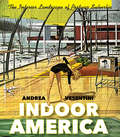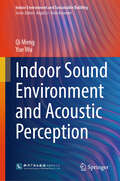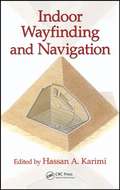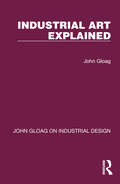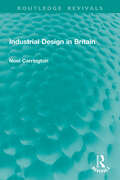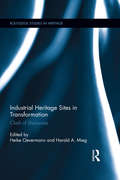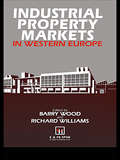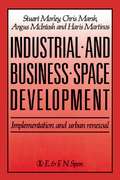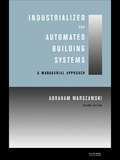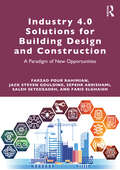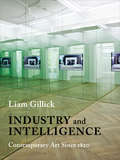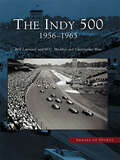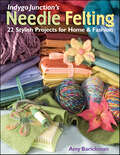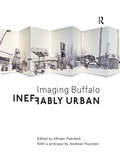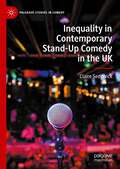- Table View
- List View
Indoor America: The Interior Landscape of Postwar Suburbia (Midcentury: Architecture, Landscape, Urbanism, and Design)
by Andrea VesentiniCars, single-family houses, fallout shelters, air-conditioned malls—these are only some of the many interiors making up the landscape of American suburbia. Indoor America explores the history of suburbanization through the emergence of such spaces in the postwar years, examining their design, use, and representation. By drawing on a wealth of examples ranging from the built environment to popular culture and film, Andrea Vesentini shows how suburban interiors were devised as a continuous cultural landscape of interconnected and self-sufficient escape capsules. The relocation of most everyday practices into indoor spaces has often been overlooked by suburban historiography; Indoor America uncovers this latent history and contrasts it with the dominant reading of suburbanization as pursuit of open space. Americans did not just flee the city by getting out of it—they did so also by getting inside. Vesentini chronicles this inner-directed flight by describing three separate stages. The encapsulation of the automobile fostered the nuclear segregation of the family from the social fabric and served as a blueprint for all other interiors. Introverted design increasingly turned the focus of the house inward. Finally, through interiorization, the exterior was incorporated into the all-encompassing interior landscape of enclosed malls and projects for indoor cities. In a journey that features tailfin cars and World’s Fair model homes, Richard Neutra’s glass walls and sitcom picture windows, Victor Gruen’s Southdale Center and the Minnesota Experimental City, Indoor America takes the reader into the heart and viscera of America’s urban sprawl.
Indoor Sound Environment and Acoustic Perception (Indoor Environment and Sustainable Building)
by Qi Meng Yue WuThis book mainly presents the state-of-the-art development in indoor sound environment. Not simply introducing the research on the acoustic environment or noise level of indoor building, the book considers the differences in the function of buildings and the perception of acoustic environment, as well as the relationship between sound quality and health and behavior. The book includes the multidisciplinary studies in architecture, acoustics, environmental science, psychology, sociology, and management. Therefore, it is used as a guide for government decision-makers, developers, planners, and architects to understand the effects of architectural design on building acoustic environment.
Indoor Wayfinding And Navigation
by Hassan A. KarimiIndoor Wayfinding and Navigation provides both breadth and depth of knowledge in designing and building indoor wayfinding and navigation systems and services. It covers the types of sensors both feasible and practical for localization of users inside buildings. The book discusses current approaches, techniques, and technologies for addressing issues in indoor wayfinding and navigation systems and services. It includes coverage of the cognitive, positioning, mapping, and application perspectives, an unusual but useful combination of information. This mix of different perspectives helps you better understand the issues and challenges of building indoor wayfinding and navigation systems and services, how they are different from those used outdoors, and how they can be used efficiently and effectively in challenging applications. Written by well-known specialists in the field, the book addresses all aspects of indoor wayfinding and navigation. It includes the latest research developments on the topic, succinctly covers the fundamentals, and details the issues and challenges in building new systems and services. With this information, you can design indoor wayfinding and navigation systems and services for a variety of uses and users.
Indra's Pearls
by David Wright David Mumford Caroline SeriesFelix Klein, a great geometer of the nineteenth century, rediscovered an idea from Hindu mythology in mathematics: the heaven of Indra in which the whole Universe was mirrored in each pearl in a net of pearls. Practically impossible to represent by hand, this idea barely existed outside the imagination, until the 1980s when the authors embarked on the first computer investigation of Klein's vision. In this extraordinary book they explore the path from some basic mathematical ideas to the simple algorithms that create delicate fractal filigrees, most appearing in print for the first time. Step-by-step instructions for writing computer programs allow beginners to generate the images.
Industrial Applications of Affective Engineering
by Junzo Watada Hisao Shiizuka Kun-Pyo Lee Tsuyoshi Otani Chee-Peng LimIndustrial Applications of Affective Engineering introduces new analytical methods such as fluctuation, fuzzy logic, fractals, and complex systems, and pursuing interdisciplinary research that traverses a wide range of fields, including information engineering, human engineering, cognitive science, psychology, and design studies. The book is split into two parts: theory and applications. The book is a collection of the best papers from ISAE2013 (International Symposium of Affective Engineering) held at Kitakyushu, Japan and Japan Kansei Engineering Meeting on March 6-8, 2013.
Industrial Art Explained (John Gloag On Industrial Design Ser.)
by John GloagOriginally published in 1934 this book became recognised as one of the principal standard works on industrial design and industrial architecture. The chapters explain the complete operation, character and background history of industrial art, its relation to architecture, materials, industrial production and retail distribution. It is fully illustrated with line drawings and photographs.
Industrial Baltimore (Images of America)
by Tom LiebelOver the course of several centuries, Baltimore evolved from a Colonial-era port city to a thriving and dynamic city ofnearly a million people at the conclusion of World War II. Asthe city grew, a wide variety of industries were established.Railroads, ports, manufacturing sites, and public infrastructure, such as power plants, fundamentally transformed large swaths of Baltimore's landscape. However, the second half of the 20th century saw a dramatic and often traumatic restructuring of the city's economy; individual businesses and entire industrial sectors downsized, relocated, or completely collapsed. Today many such areas of Baltimore have changed radically as abandoned manufacturing sites have been demolished or converted to new uses. Images of America: Industrial Baltimore documents a vital component of the city's working past through historic photographs of the people and sites that made the city an essential economic engine of the Industrial Revolution.
Industrial Design
by Jim LeskoIndustrial Design: Materials and Manufacturing Guide, Second Edition provides the detailed coverage of materials and manufacturing processes that industrial designers need without the in-depth and overly technical discussions commonly directed toward engineers. Author Jim Lesko gives you the practical knowledge you need to develop a real-world understanding of materials and processes and make informed choices for industrial design projects.In this book, you will find everything from basic terminology to valuable insights on why certain shapes work best for particular applications. You'll learn how to extract the best performance from all of the most commonly used methods and materials.
Industrial Design in Britain (Routledge Revivals)
by Noel CarringtonIndustrial Design in Britain (1976) describes the industrial design movement in Britain from its origins, when it broke away from the Arts and Crafts in 1915, until 1945 when its vital importance to industry was officially recognised, and the Council of Industrial Design was established with a grant from the Government.
Industrial Design of Experiments: A Case Study Approach for Design and Process Optimization
by Sammy ShinaThis textbook provides the tools, techniques, and industry examples needed for the successful implementation of design of experiments (DoE) in engineering and manufacturing applications. It contains a high-level engineering analysis of key issues in the design, development, and successful analysis of industrial DoE, focusing on the design aspect of the experiment and then on interpreting the results. Statistical analysis is shown without formula derivation, and readers are directed as to the meaning of each term in the statistical analysis. Industrial Design of Experiments: A Case Study Approach for Design and Process Optimization is designed for graduate-level DoE, engineering design, and general statistical courses, as well as professional education and certification classes. Practicing engineers and managers working in multidisciplinary product development will find it to be an invaluable reference that provides all the information needed to accomplish a successful DoE.
Industrial Engineering Projects: Practice and procedures for capital projects in the engineering, manufacturing and process industries
by The Joint Development BoardThis handbook provides a clear explanation of the commercial, contractual and statutory aspects of a capital project in the process industries from feasability studies, through commissioning/contract; to construction operation.
Industrial Heritage Sites in Transformation: Clash of Discourses (Routledge Studies In Heritage Ser.)
by Harald A. Mieg Heike OevermannThe management of industrial heritage sites requires rethinking in the context of urban change, and the issue of how to balance protection, preservation/conservation, and development becomes all the more crucial as industrial heritage sites grow in number. This brings into play new challenges—not only through the known conflicts between monument preservation and contemporary architecture, but also with the increasing demand for economic urban development by reusing the built heritage of former industrial sites. This book explores the conservation and change of industrial heritage sites in transformation, presenting and examining ten European and Asian case studies. The interdisciplinary approach of the book connects a diversity of rationales and discourses, including monument protection, World Heritage conventions, urban regeneration, urban planning and design, architecture, and politics. This is the first book to deepen the understanding of industrial heritage site management as a networked, multi-dimensional task involving diverse social agents and societal discourses.
Industrial Networks and Cinemas of India: Shooting Stars, Shifting Geographies and Multiplying Media
by Monika Mehta Madhuja MukherjeeThis volume points to the limits of models such as regional, national, and transnational, and develops ‘network’ as a conceptual category to study cinemas of India. Through grounded and interdisciplinary research, it shows how film industries located in disparate territories have not functioned as isolated units and draws attention to the industrial traffic – of filmic material, actors, performers, authors, technicians, genres, styles, sounds, expertise, languages, and capital, across trans-regional contexts -- since the inception of cinema. It excavates histories of film production, distribution and exhibition, and their connections beyond regional and national boundaries, and between places, industrial practices, and multiple media. The chapters in this volume address a range of themes such as transgressive female figures; networks of authors and technicians; trans-regional production links and changing technologies, and new media geographies. By tracking manifold changes in the contexts of transforming media, and inter-connections between diverse industrial nodal points, this book expands the critical vocabulary in media and production studies and foregrounds new methods for examining cinema. A generative account of industrial networks, this volume will be useful for scholars and researchers of film studies, cinema studies, media studies, production studies, media sociology, gender studies, South Asian studies, and cultural studies.
Industrial Property Markets in Western Europe
by Richard Williams Barry WoodAn important reference book both now and post 1992. It gives a clear introduction to the industrial property market in Europe and provides the information needed to understand each country's system of planning and property development.
Industrial and Business Space Development: Implementation and urban renewal
by C. Marsh H. Martinos A. McIntosh S. MorelyAn insight into the changing nature of the industrial and business space property market and how business space development schemes can be initiated and implemented to revitalise urban areas.
Industrialized and Automated Building Systems: A Managerial Approach
by Abraham WarszawskiIndustrialized and Automated Building Systems presents a detailed and balanced evaluation of the benefits and drawbacks of industrialized building systems, and considers technological, managerial and economical aspects of industrialization, automation in the industrialized building process in production, construction and design, and information technologies in design, production and construction on site.
Industries of Architecture
by Katie Lloyd Thomas Tilo Amhoff Nick BeechAt a time when the technologies and techniques of producing the built environment are undergoing significant change, this book makes central architecture’s relationship to industry. Contributors turn to historical and theoretical questions, as well as to key contemporary developments, taking a humanities approach to the Industries of Architecture that will be of interest to practitioners and industry professionals, as much as to academic researchers, teachers and students. How has modern architecture responded to mass production? How do we understand the necessarily social nature of production in the architectural office and on the building site? And how is architecture entwined within wider fields of production and reproduction—finance capital, the spaces of regulation, and management techniques? What are the particular effects of techniques and technologies (and above all their inter-relations) on those who labour in architecture, the buildings they produce, and the discursive frameworks we mobilise to understand them?
Industry 4.0 Solutions for Building Design and Construction: A Paradigm of New Opportunities
by Farzad Pour Rahimian Saleh Seyedzadeh Sepehr Abrishami Jack Steven Goulding Faris ElghaishThis book provides in-depth results and case studies in innovation from actual work undertaken in collaboration with industry partners in Architecture, Engineering, and Construction (AEC). Scientific advances and innovative technologies in the sector are key to shaping the changes emerging as a result of Industry 4.0. Mainstream Building Information Management (BIM) is seen as a vehicle for addressing issues such as industry fragmentation, value-driven solutions, decision-making, client engagement, and design/process flow; however, advanced simulation, computer vision, Internet of Things (IoT), blockchain, machine learning, deep learning, and linked data all provide immense opportunities for dealing with these challenges and can provide evidenced-based innovative solutions not seen before. These technologies are perceived as the “true” enablers of future practice, but only recently has the AEC sector recognised terms such as “golden key” and “golden thread” as part of BIM processes and workflows. This book builds on the success of a number of initiatives and projects by the authors, which include seminal findings from the literature, research and development, and practice-based solutions produced for industry. It presents these findings through real projects and case studies developed by the authors and reports on how these technologies made a real-world impact. The chapters and cases in the book are developed around these overarching themes: • BIM and AEC Design and Optimisation: Application of Artificial Intelligence in Design • BIM and XR as Advanced Visualisation and Simulation Tools • Design Informatics and Advancements in BIM Authoring • Green Building Assessment: Emerging Design Support Tools • Computer Vision and Image Processing for Expediting Project Management and Operations • Blockchain, Big Data, and IoT for Facilitated Project Management • BIM Strategies and Leveraged Solutions This book is a timely and relevant synthesis of a number of cogent subjects underpinning the paradigm shift needed for the AEC industry and is essential reading for all involved in the sector. It is particularly suited for use in Masters-level programs in Architecture, Engineering, and Construction.
Industry and Intelligence: Contemporary Art Since 1820
by Liam GillickThe history of modern art is often told through aesthetic breakthroughs that sync well with profound cultural and political change. Monet's riotous landscapes, Picasso's fractured forms, Pollock's insolent splatters, Warhol's proliferating soup cans-these examples track with the disruptions of industrialization, fascism, revolution, and war, among other influences. But filtering modern art only through catastrophic events cannot account for the subtle interrogations that inform so many contemporary works.The conceptual artist Liam Gillick writes the holistic genealogy of contemporary art that we need to appreciate its engagement with history, even when it seems apathetic or blind to current events. Rather than focus on dominant works or special cases, Gillick takes a broad view of artistic creation from 1820 to today, underscoring the industry and intelligence of artists as they have responded to incremental developments in science, politics, and technology. The great innovations and dislocations of the nineteenth and twentieth centuries have their place in this timeline, but their traces are alternately amplified and diminished as Gillick moves through artistic reactions to liberalism, mass manufacturing, psychology, nuclear physics, automobiles, and a host of other advances. He intimately ties the origins of contemporary art to the social and technological adjustments of modern life, which artists struggled to incorporate truthfully into their works.
Industry and Intelligence: Contemporary Art Since 1820 (Bampton Lectures in America)
by Liam GillickThe history of modern art is often told through aesthetic breakthroughs that sync well with cultural and political change. From Courbet to Picasso, from Malevich to Warhol, it is accepted that art tracks the disruptions of industrialization, fascism, revolution, and war. Yet filtering the history of modern art only through catastrophic events cannot account for the subtle developments that lead to the profound confusion at the heart of contemporary art.In Industry and Intelligence, the artist Liam Gillick writes a nuanced genealogy to help us appreciate contemporary art's engagement with history even when it seems apathetic or blind to current events. Taking a broad view of artistic creation from 1820 to today, Gillick follows the response of artists to incremental developments in science, politics, and technology. The great innovations and dislocations of the nineteenth and twentieth centuries have their place in this timeline, but their traces are alternately amplified and diminished as Gillick moves through artistic reactions to liberalism, mass manufacturing, psychology, nuclear physics, automobiles, and a host of other advances. He intimately ties the origins of contemporary art to the social and technological adjustments of modern life, which artists struggled to incorporate truthfully into their works.
Indy 500, The: 1956-1965 (Images of Sports)
by W. C. Madden Ben Lawrence Christopher BaasThe 1950s and early 1960s are considered by many to be the Golden Era of Racing at the Indianapolis 500, and photographer Ben Lawrence was on hand taking photos of the Greatest Spectacle for the Indianapolis Times. During that era, Ben captured many images of the race and race events that surrounded the Indy 500. He was there when Bill Vukovich met his fate in 1955. He photographed the first Indianapolis 500 Parade, which has become an annual event. He captured A.J. Foyt winning his first race at the Brickyard. He was on hand to photograph the breaking of the 150-mph barrier. Then he saw the transition from the front-engined Offenhauser to the rear-engined Lotus-Fords, which ended the Golden Era.
Indygo Junction's Needle Felting: 22 Stylish Projects for Home & Fashion
by Amy BarickmanBeautiful Projects to Create in Wool • Needle felting's easy to learn and fun to do! • Make and embellish pretty things to wear, bags to carry, funky jewelry, plus pillows, runners, bowls and more for the home • Complete instructions for hand and machine techniques using a variety of fibers • 22 projects with that vintage-cool Indygo Junction look-plus an inspiring gallery from five top designers Learn a fresh new craft from your favorite designers at Indygo Junction! Creating and embellishing wool fashions and accessories is easy and remarkably fun. Choose or re-use wool fabrics, then add yarns, roving and novelty fibers. You'll learn how to prepare materials, plus techniques for dry and wet felting. Lots of projects show off your skills! Click here to enjoy Amy at Quilt Market talking about her fantastic book.
Ineffably Urban: Imaging Buffalo
by Miriam PaeslackBuffalo, in New York state, is 'ineffable': a typical city in transition between its past and future. It is a classic example of one of many 'shrinking cities' in North America and elsewhere which once prospered because of heavy industrialization, but which now have to deal with various degrees of urban decay. Bringing together a range of scholars from the humanities, the social sciences, art and architecture, this volume looks at both the literal city image and urban representation generated by photographs, video, historical and contemporary narratives, and grass-root initiatives. It investigates the notion of agency of media in the city and, in return, what the city’s agency is. This agency matters particularly as it is both transforming - shrinking, fading, being redefined - and being shaped through its visual and spatial mediation. While illustrated by Buffalo in particular, the book examines a broader phenomenon: the identity of those cities that were built and blossomed during the late 19th and early 20th century and are now in different stages of decline and disintegration. However, while such cities are all confronted with complex issues of economic instability, social and racial segregation, urban sprawl and shrinking processes both in the inner city and more and more in their ex-urban belts, they are too often described through dramatically simplifying visual and linguistic tropes. In Buffalo such tropes refer dialectically either to the city’s past glory or its presumed current cultural, political and economical stasis and decline. This book takes such tired, and familiar tropes and questions them.
Inequality in Contemporary Stand-Up Comedy in the UK (Palgrave Studies in Comedy)
by Claire SedgwickThis Pivot explores the cultural economy of comedy in the UK, looking specifically at the links between industry practices and structures and who produces comedy in the UK. The research is based on interviews with comedians in the East Midlands; significantly, this demographic has been historically under-researched in studies of precarity, where the East Midlands is typically overlooked in discussions of arts funding and access in favour of a more simplistic north/south divide narrative. Similarly, whilst there has been increased discussion of the precarity of the creative and cultural industries, as well as media articles on the difficulty of breaking into comedy as a member of a marginalised group, there has been relatively little academic research to support this. While Friedman’s work in particular has been helpful for understanding the link between comedy producers, class and taste making, there has been less attention paid to the sociologies of work within comedy. This book fillsthese gaps in research by exploring the experiences of comedians in the East Midlands, contributing to the rich body of scholarship on inequality in the cultural industries and promoting a better understanding of the impact of structural inequalities and precarity on access to the cultural industries.
